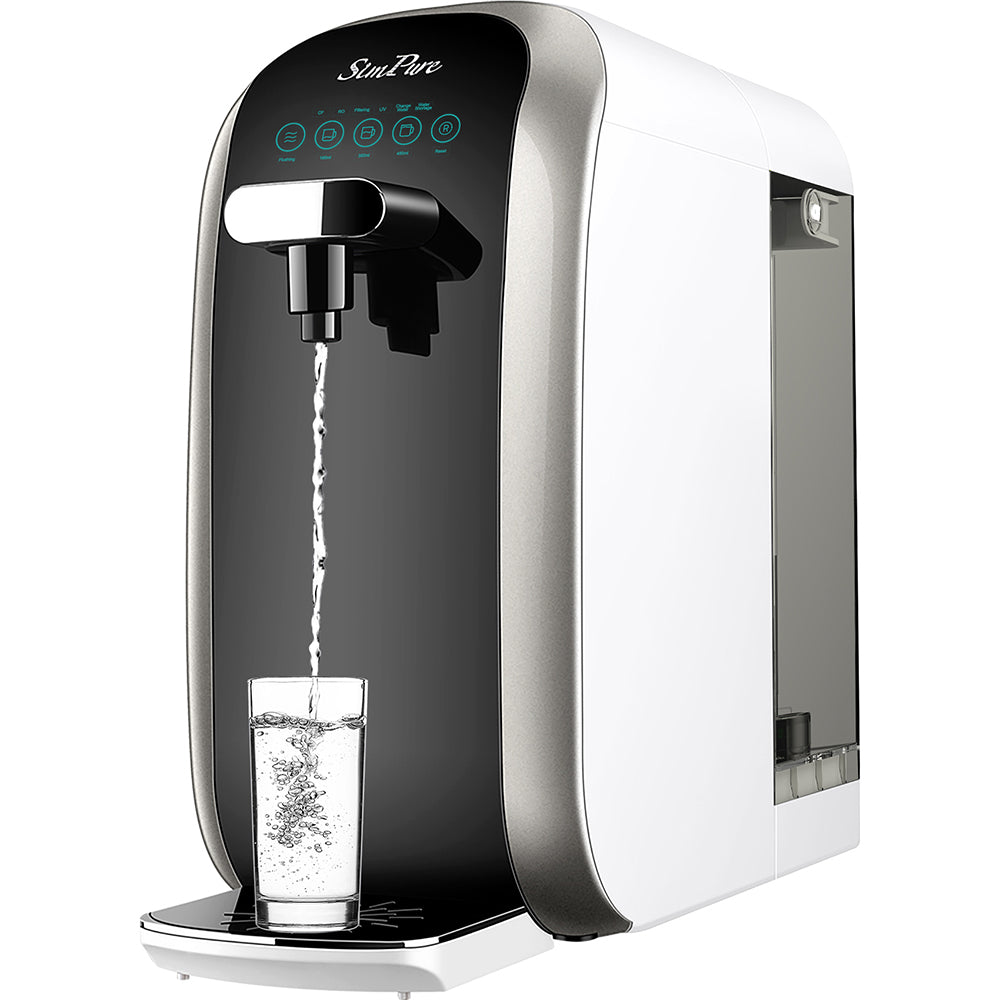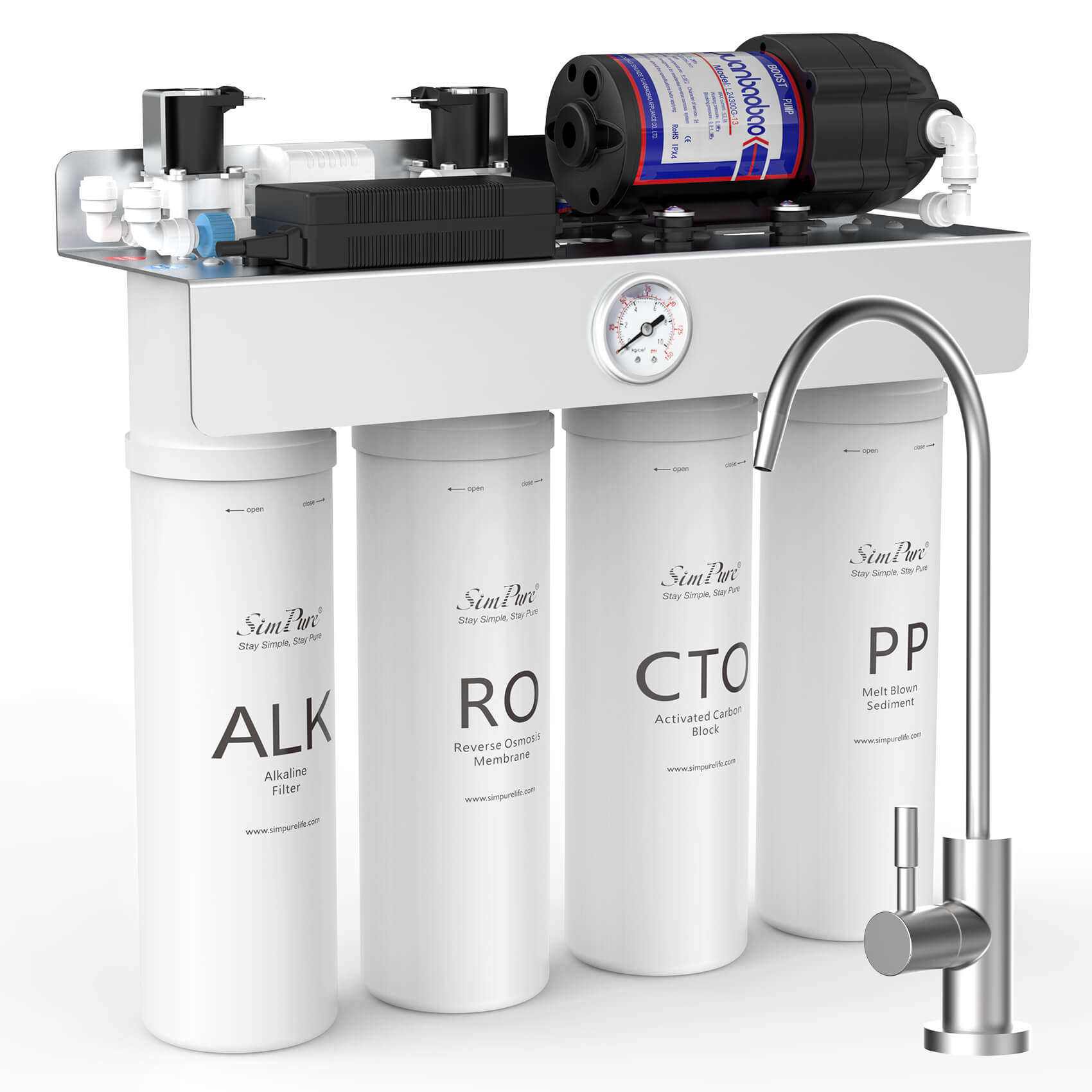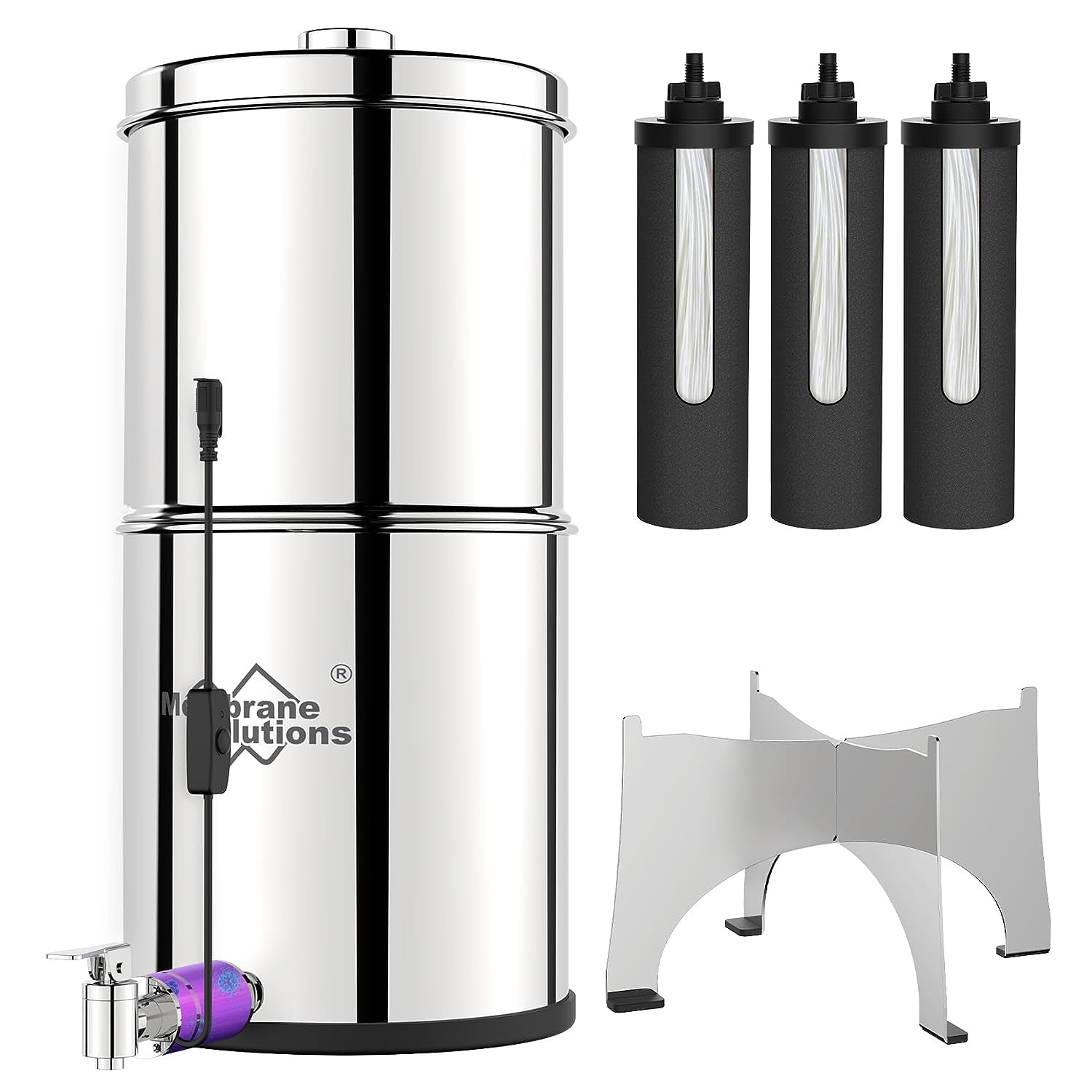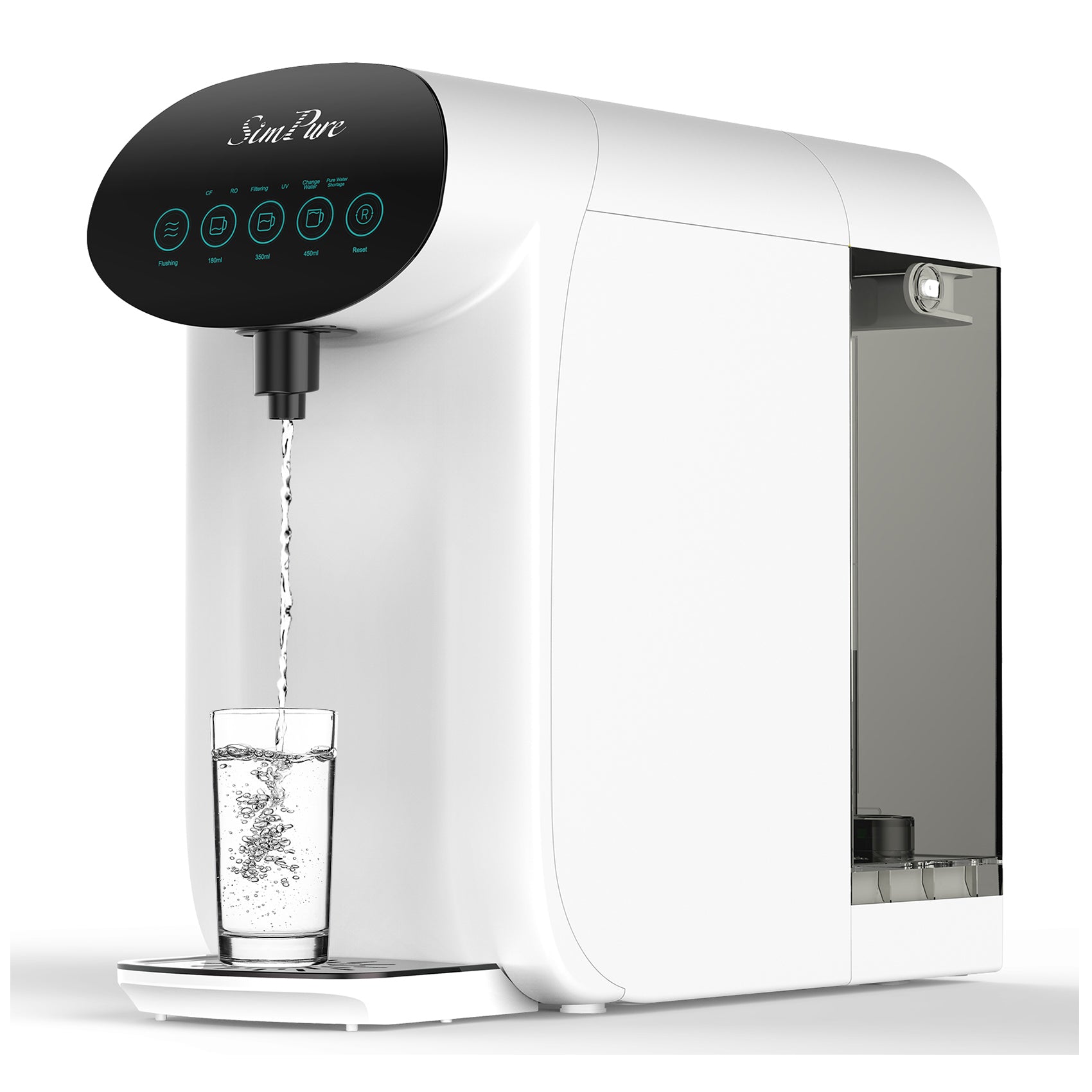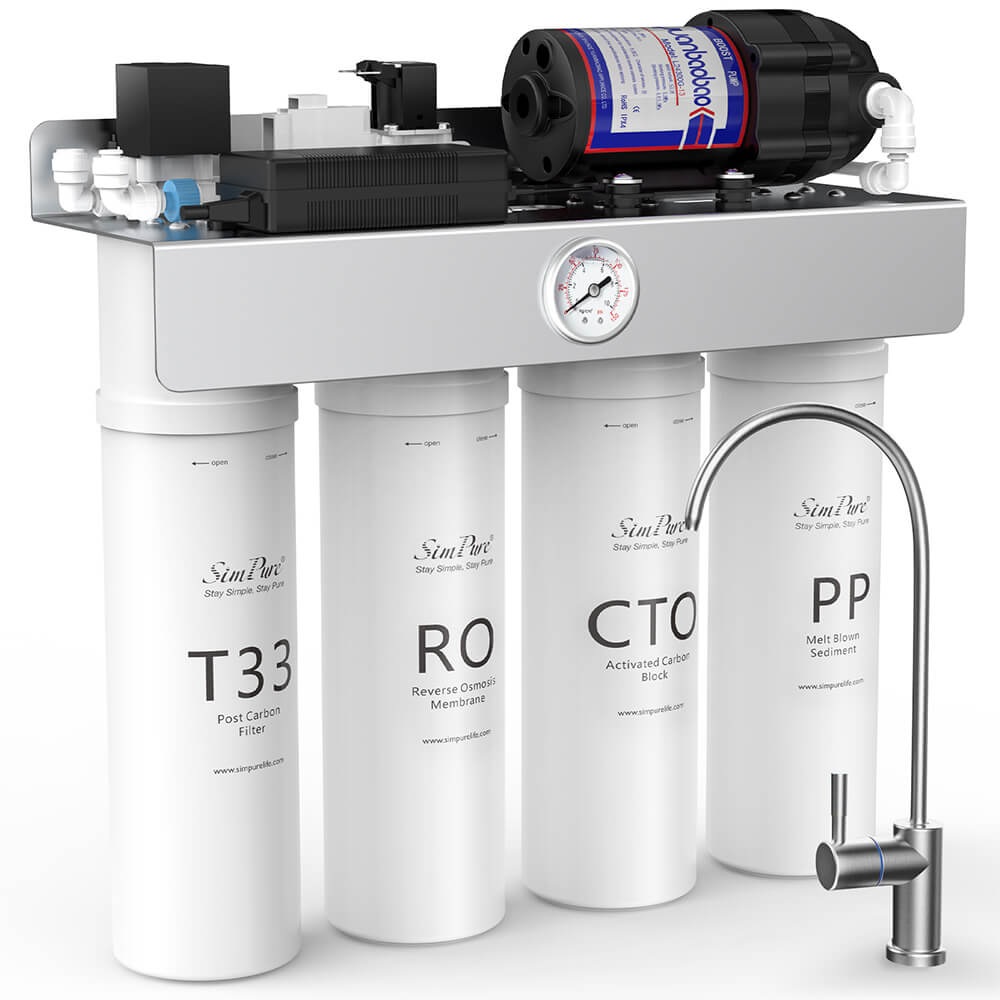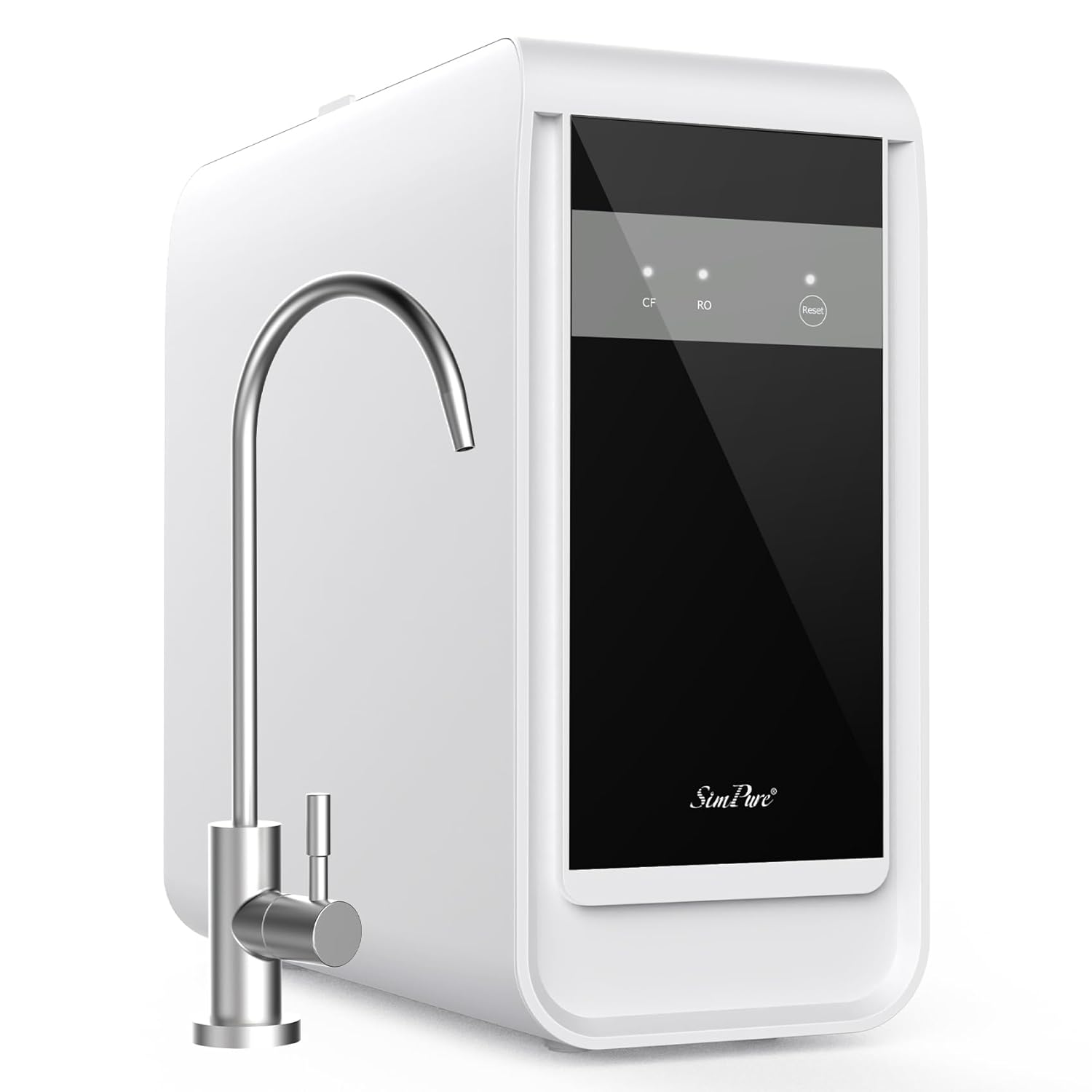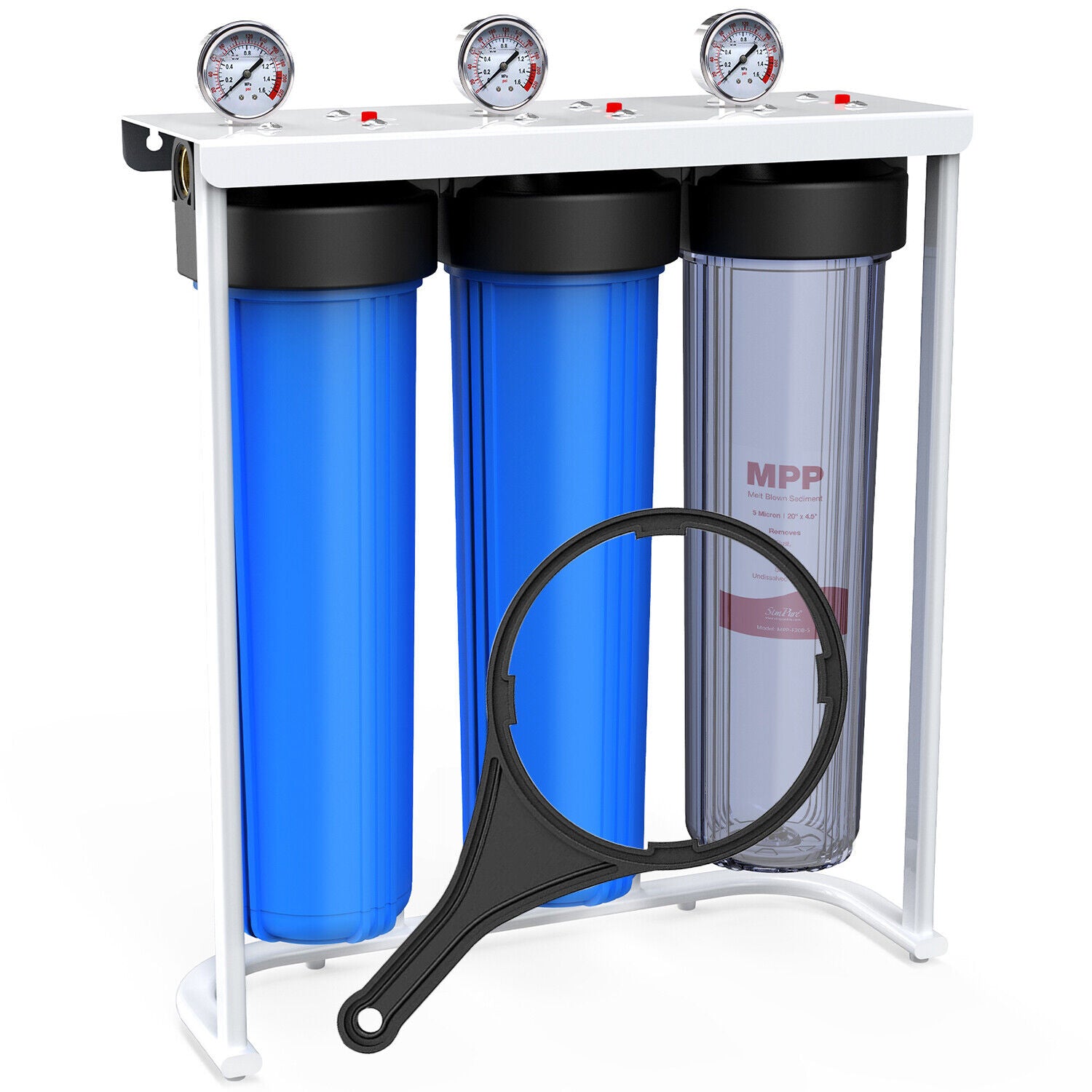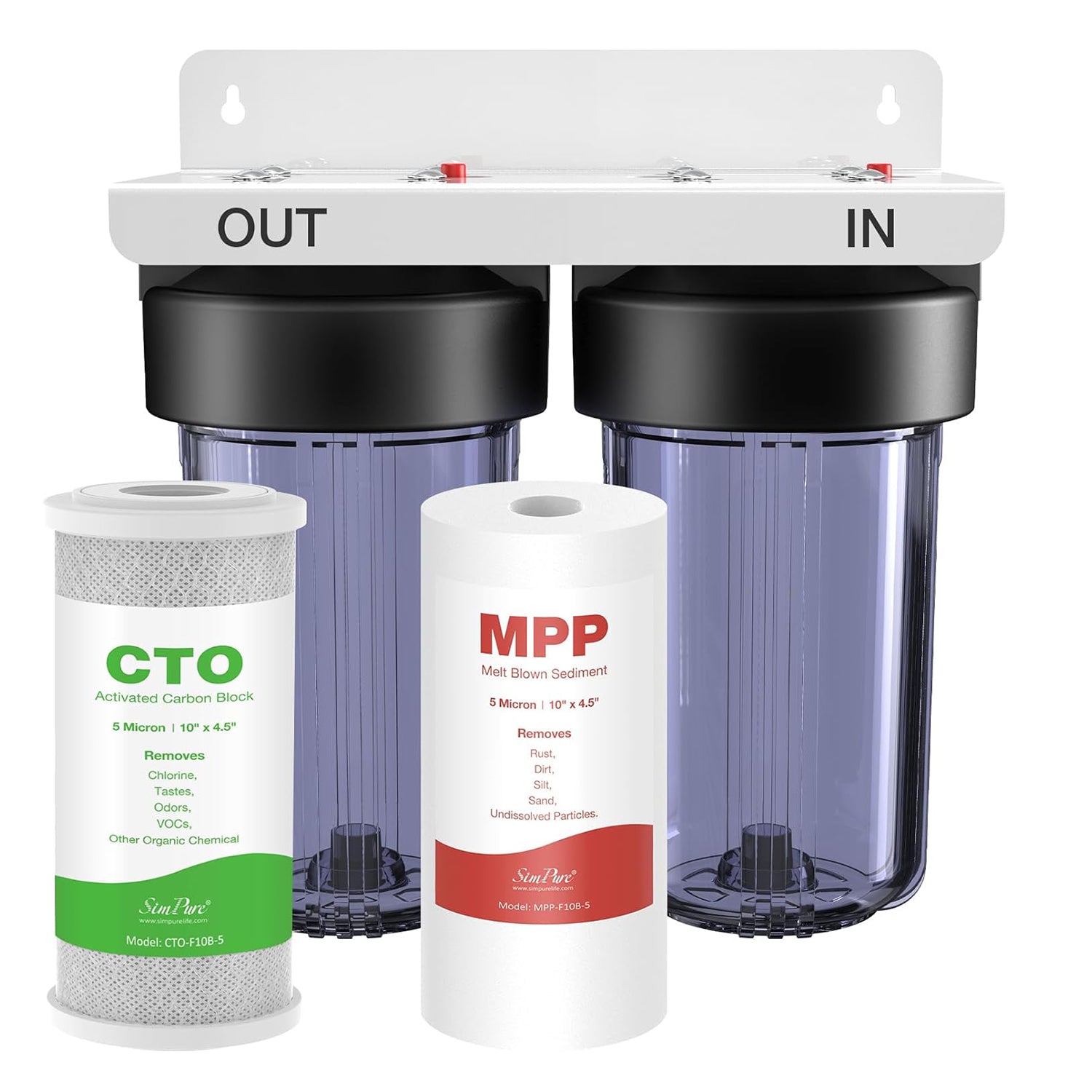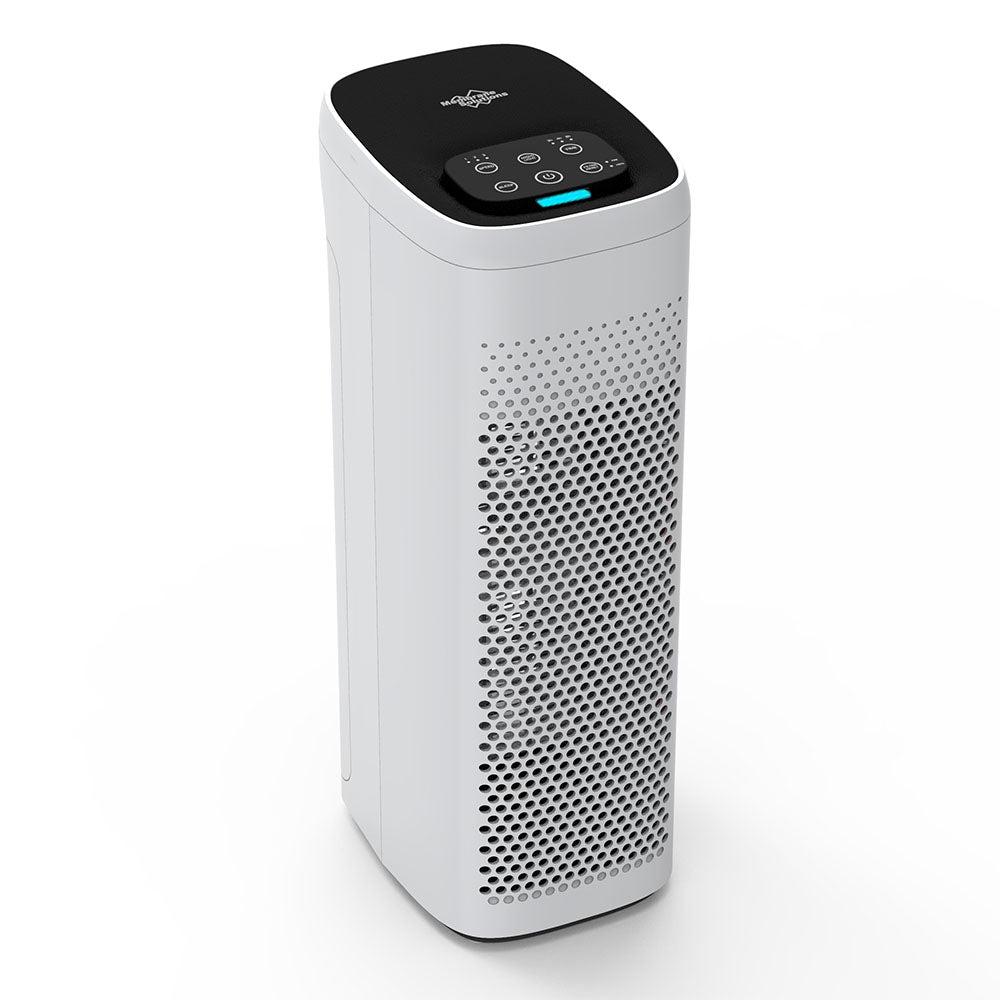Although the water purifier filter is good, it will inevitably encounter various problems during use. Filters can face issues that compromise their effectiveness. In this guide, we'll delve into quick and practical water filter troubleshooting techniques to swiftly address common problems, ensuring your home's water remains pure.
Top 7 Common Water Filter Filtration Problems [ With Solutions]
Understanding these challenges and their solutions ensures a comprehensive approach to maintaining a reliable filtration system. Join us as we explore the intricacies of water filter maintenance, uncovering common issues that might affect your water quality.
1. Water Leaking From Water Purifier
The reason for the water purifier leaking may be excessive water pressure, or improper operation during installation, such as whether the joints that require raw material tape, pipe plugs, and rubber gaskets are intact. The probability of occurrence of pure water machine is more.
Water filter leaks can be a hassle, but addressing them promptly ensures a continuous supply of clean water. Start by identifying the leak's source. Tighten loose connections, such as fittings and valves, using a wrench. If the leak persists, replace damaged O-rings or gaskets, common culprits for leakage. Ensure all components are properly aligned and securely fastened. For persistent or complex leaks, consult your filter's manual or reach out to the manufacturer for guidance.
2. Reduced Water Pressure: Filter Hampers Water Flow Strength
When a water filter impedes water pressure, it indicates a common issue affecting the system's efficiency. Over time, debris, sediment, or mineral build-up within the filter can restrict the flow, leading to decreased water pressure. This reduction in pressure affects the speed and volume of water coming out of faucets, impacting daily activities. The clog may occur due to improper maintenance or an exhausted filter.
Solution: Before installing the water purifier, first measure the water pressure to ensure that the water pressure is within the use range of the water purifier. To resolve reduced water pressure, start by turning off the water supply. Then, inspect and clean the filter thoroughly to remove any accumulated debris. If the issue persists, consider replacing the filter with a new, compatible one to restore optimal water flow. If the water pressure is too high, it is necessary to install a pressure reducing valve. If the water pressure is too low, it is recommended that the user install an increased pressure pump.
3. The New Water Filter Has a Peculiar Smell
After the home water purifier is installed, the water fiter must be flushed first. The correct flushing method ensures the normal use in the later period. If the washing sequence is wrong, more problems will occur. If the washing sequence of the water filter with ultrafiltration membrane is wrong, the protection liquid in the ultrafiltration membrane will enter the rear activated carbon filter element, and the protection liquid will affect the activated carbon filter element. As a result, the taste of the water from the water filter is not good.
The outlet of the water purifier requires the installation of a food-grade hose. If the hose material installed at the water purifier outlet of the water purifier is unqualified, the rubber smell of the hose itself will change the taste of the water, and it will also lead to filtered water taste bad.
Solution: After the installation is complete, flush the water filter correctly, guide the user to the correct use method, and choose food-grade high-quality hoses when installing the water purifier to avoid unnecessary troubles.
4. The Effect of Purified Water Is Not Very Obvious

The water source required by the water purifier is municipal tap water. If the water source treated by the water purifier does not meet the requirements of the influent water quality, it will cause a phenomenon that the water purification effect is not good. The water source used in many places is groundwater, and in some places in relatively old communities, the tap water pipes are galvanized pipes. Due to the long time, the galvanized pipes are seriously aged and rusted, and the water source is turbid. In the case of this kind of water quality, the editor of Simpure recommends not to install the water purifier directly. The sand and rust in the raw water can easily contaminate and block the filter element in the water purifier, causing no water or poor water purification effect.
Solution: Before installation, the water pressure should be tested and the water quality of the incoming water should be tested. If the water quality does not meet the requirements of the incoming water, communicate with the user. It is recommended to install a pre-filter in front of the water purifier. If the water source used by the user's home is groundwater or reservoir water, a pre-filter must be installed in front of the water filter.
5. Turbidity Issues: Cloudy Water, Unclear Filtration Results
Turbidity refers to the cloudiness or haziness of water caused by suspended particles, silt, or fine debris. When a water filter encounters turbidity issues, it signifies a compromised filtration process that allows these particles to pass through, leading to cloudy or unclear water. This not only affects the water's visual appeal but also raises concerns about the effectiveness of the filtration system in removing harmful contaminants.
Solution: To address turbidity issues, start by examining the filter for damage or clogs. Clean or replace the filter if necessary. Consider upgrading to a filter with a finer mesh or enhanced filtration capabilities to capture smaller particles. Additionally, ensure that the water pressure is within the recommended range, as inadequate pressure may contribute to inefficient filtration. Regular maintenance and adherence to the manufacturer's guidelines will help prevent and resolve turbidity problems, ensuring your water remains consistently clear and safe for consumption.
6. Unpleasant Odors: Strange Smells Affect Water Taste
Unpleasant odors in your water indicate a potential issue with your water filter system. Foul smells can result from a variety of factors, including bacterial growth, mold, or the absorption of odor-causing substances. Over time, the water filter may become a breeding ground for contaminants, leading to compromised water quality and taste. These odors can be off-putting and affect your overall satisfaction with the filtered water.
Solution: To address this problem, initiate a thorough cleaning and maintenance routine for your water filter. Begin by turning off the water supply and dismantling the filter components. Clean the filter housing, cartridges, and any removable parts using a mixture of mild detergent and water. For stubborn odors, consider soaking the components in a solution of vinegar and water. Ensure all parts are thoroughly rinsed and properly reassembled. If the issue persists, it may be time to replace the filter cartridges, as prolonged use can diminish their effectiveness.
7. Filter Lifespan Exceeded: Ineffectiveness Due to Expired Filter
As water filters age, their efficiency gradually diminishes, reaching a point where the filter can no longer effectively remove impurities. When the filter's lifespan is exceeded, it loses its ability to trap contaminants, leading to compromised water quality. This results in the consumption of water containing particles, bacteria, and other pollutants that the filter was originally designed to eliminate.
Solution: To address the issue of an expired water filter, it is crucial to adhere to the manufacturer's recommended replacement schedule. Regularly replace filters based on usage and water quality conditions. Most filters come with indicators signaling when a replacement is necessary. When changing the filter, ensure to follow the manufacturer's instructions for proper installation. Choosing the correct filter type and size is paramount for optimal performance. By consistently replacing filters on time and selecting the right replacements, you maintain the efficiency of your water filtration system, ensuring a continuous supply of clean and safe drinking water for you and your family. Here we also recommend you read our blog: Do Water Filters Expire?
How to Prevent Above Problems from Water Filtration System?
Water purifier problems occur frequently, especially when the temperature rises, so we need to pay attention to some problems when using the water filter during summer. The following simplelife will explain to you what problems should be paid attention to.
①The water filter must be cleaned regularly.
Hot weather will cause a large number of bacteria to grow and multiply. it is very important for the daily cleaning of the water filter Even if the water purifiers are installed in cold places, . After being used for a long period of time, the water purifier we use should be simply cleaned. When the water purifier has not been used for a long period of time, it should be cleaned for a long time before we use, until the original water purifier The remaining moisture and dirt are completely flushed out.
②The water filtration system needs to be placed away from sunlight.

The water purifier is not suitable for more sun exposure because the water purifier will be filled with the water you need every day and a large number of bacteria will grow in hot conditions, which could affect water quality and our health. If conditions and other factors require it to be placed in a part with direct sunlight, it is recommended to build a baffle near the location of the water purifier to block some of the sunlight or to place it in a corner of shadow during the Installation to reduce some of the solar radiation.
③Keep regular maintenance & repair for water filter.
The key to the purification of water quality of the water purifier lies in its filter element, and the water filter element has a certain lifespan, because the filter element is a consumable, the filter element also bears the overload damage of the pollutants while blocking the pollutants. After a period of use, the filtration efficiency and quality of the movement will be greatly reduced. Therefore, everyone needs to know when to change water filter and remember that the filter element should be replaced with a new filter element in time after a period of use to increase the quality and safety of our water.
In addition, if the water purifier is not used for a long time, the power should be turned off to avoid damage to it and waste of unnecessary resources due to long-term consumption; after the water purifier is installed, it cannot be moved or disassembled at will, If it is a wall-mounted water purifier, pay attention to shade to avoid being exposed to direct sunlight to affect the taste and service life.
At last, water plays a pivotal role in our lives, and the quality of water determines our health. Therefore, the correct use of high-quality water purifiers is related to our drinking water health and cannot be ignored. The above are the issues that need to be paid attention to when using the water purifier in summer. I hope everyone will pay attention to water health and use the water purifier correctly!




